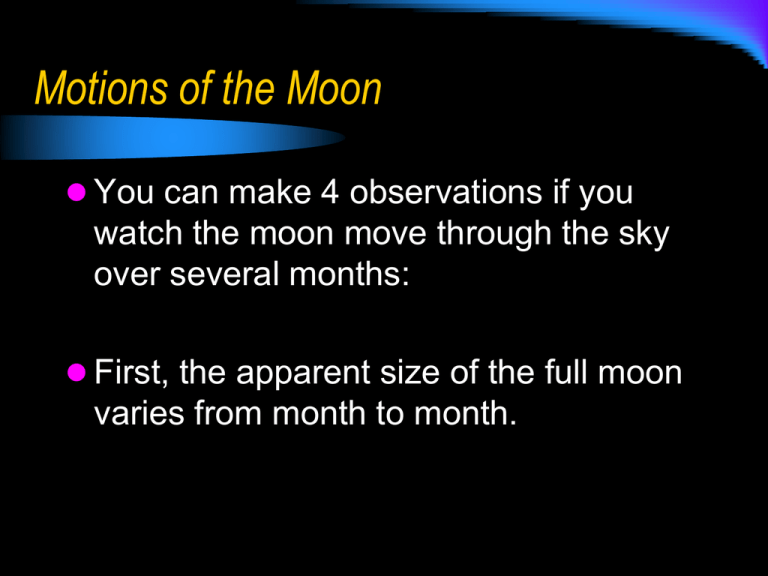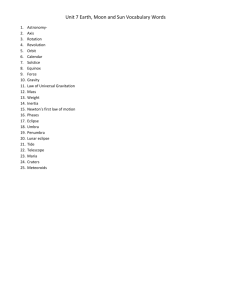Motions of the Moon PowerPoint
advertisement

Motions of the Moon You can make 4 observations if you watch the moon move through the sky over several months: First, the apparent size of the full moon varies from month to month. Motions of the Moon (2) From the different sizes of the full moon, we can conclude that the moon’s orbit is quite elliptical. In fact it varies by 13.3% of the average distance. Perigee or closest approach is 356,000 km. Apogee or farthest approach is 407,000 km, with an average of 384,000 km. Motions of the Moon (3) 2nd Observation: the moon doesn’t orbit the earth on the ecliptic (the plane of the earth’s orbit and the apparent path of the sun against the background of stars), but rather spends half its time above and half its time below the ecliptic. From this, we can conclude that the moon’s orbit is tilted or inclined (5o with respect to the ecliptic.) http://www.mmscrusaders.com/newscirocks/eclipse/eclipses.htm Motions of the Moon (4) Later, we’ll use the inclination of the moon’s orbit as a clue to its origin. The tilt is evidence that the moon was NOT formed at the same time and in the same region of space as the earth was formed, but that another process caused the origin of the moon. Motions of the Moon (5) 3rd Observation: The moon moves eastward against the background of stars, ~0.5o (the width of the moon) per hour, 13o per day. This causes the moon to lag behind the stars, rising 53 minutes later every evening. The orbital motion results in the changing lunar phases. http://www.sumanasinc.com/webcontent/anisamples/astronomy/moonphase.html The hyperlink above illustrates the changing lunar phases as the moon orbits the earth. Motions of the Moon (6) The 4th observation is that the same side of the moon always faces the earth. This means that the moon rotates on its axis at exactly the same rate at which it orbits the earth. We call this “locked” rotation synchronous rotation. Later, this synchronous rotation will give us a clue about the construction of the moon’s interior. http://www.sckans.edu/~gangwere/LAS170a2/_27.html Synchronous Rotation of the Moon







